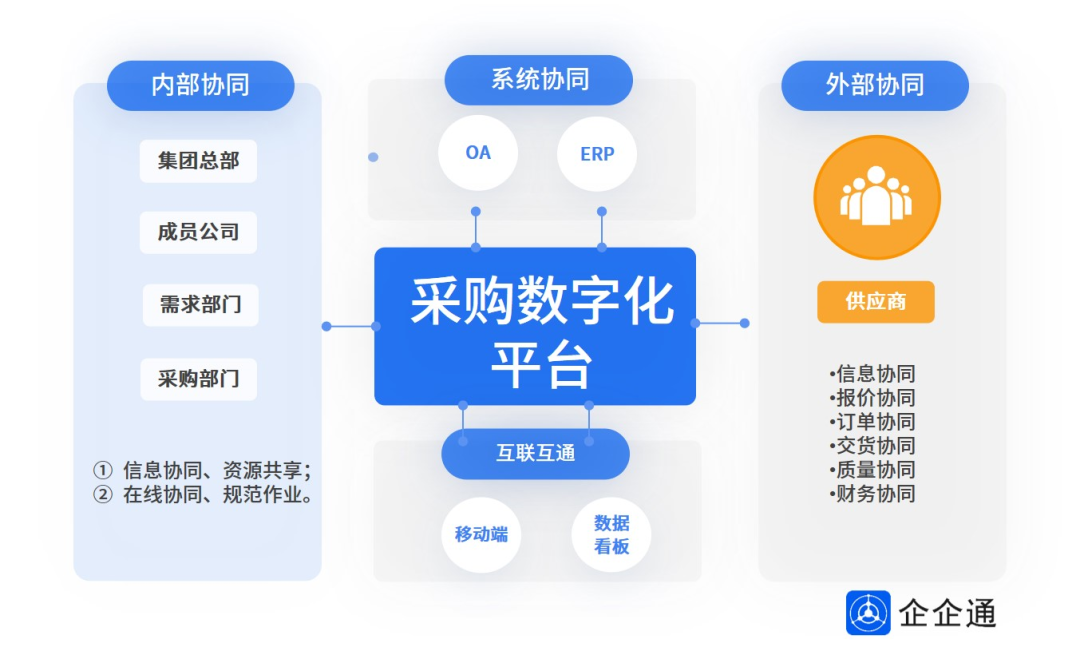

01. What is indirect procurement?
Generally, we divide procurement into direct materials and indirect materials.
Direct procurement: the purchase of materials and services for product production and sales, serving external customers, also called productive procurement. Such as raw materials, product packaging, logistics services, etc. Whether it is raw materials required for production, semi-finished products or packaging materials used in products, and material transportation, direct procurement is basically tangible physical procurement.
Indirect procurement: Support product production and sales, as well as the purchase of materials and services to maintain the normal operation of the enterprise, serving internal customers, also called non-productive procurement. Such as: administrative procurement, market activity procurement, equipment and facility procurement, service procurement, etc. The categories involved in indirect procurement are relatively complicated, except for some fixed assets such as equipment and facilities, most of them are intangible services.
Indirect procurement accounts for a considerable proportion of a company's overall procurement expenditure. For example, in medical care, education, and Internet companies, the proportion can reach 30-40%, and in consumer goods and manufacturing, it can also account for about 10%.
Procurement costs are very important to enterprises. Since direct procurement is constrained by frequent outbreaks of the epidemic, the international economic environment, and market fluctuations, the space for compressible costs is limited. Therefore, the pressure to reduce costs in procurement falls on indirect procurement. The cost reduction potential of indirect procurement is often much greater than that of direct procurement, so how to manage and optimize the indirect procurement process is very important.

02. Analysis: 5 major pain points of indirect procurement
There are many difficulties in indirect procurement. There are five pain points in a brief summary:
First, the types of materials are miscellaneous. Generally, the material categories involved in the enterprise include MRO (maintenance, maintenance and operation), administrative, welfare, IT procurement, service, fixed assets, etc., and each category can be divided into more details. Compared with direct materials , there are many material categories of indirect materials and the procurement process is complicated.
Second, the needs are not clear. Most of the indirect procurement faces internal customers, that is, most of the functional departments within the company. Everyone can submit procurement needs, and as long as the leader approves, they will be handed over to procurement. However, it is often found that the demand list provided by the demand department is ambiguous and lacks specification requirements. A demand needs to be confirmed by the purchaser many times before it is clarified. Such a process is very labor-intensive and time-consuming.
Third, the need is urgent. All departments, all owners, and all affairs of the affiliated company for indirect procurement. The procurement department is faced with so many demanders, and everyone reports that their needs are urgent and require priority processing. But for the procurement department, it is hard to tell which ones are real. very worried about. For the sake of the principle of fairness, it can only be set to be processed in order of priority. The result is that the purchasing department receives frequent complaints, which is miserable.
Fourth, the number of suppliers is large and difficult to manage. Due to the many categories of indirect procurement and complicated materials, this leads to a large number of suppliers. How to manage these suppliers and how to ensure the quality of suppliers' products are all problems that enterprises need to face to maximize their benefits.
Fifth, data integration is difficult. The categories of indirect procurement are miscellaneous and the frequency is high. The procurement department can obtain relevant information such as commodity price range, product quality, category, supplier, etc. through data integration and analysis in recent months/half a year. However, if data integration is done manually, the accuracy is low. And work efficiency is low.
03. Digital solutions for enterprise-enterprise indirect procurement
The characteristics of indirect procurement and direct procurement of enterprises are different in terms of procurement categories, service objects, business focus and KPI assessment, etc., and their management demands are also different. In recent years, more and more companies have begun to pay attention to cost reduction in indirect procurement. Through effective management and strategies, it is possible to reduce indirect procurement costs by 10% to 30%, and at the same time, it can also liberate the workload of procurement personnel.
Qiqitong SaaS indirect procurement digital solution helps enterprises establish a one-stop procurement management and control system, sort out key nodes in procurement execution, and each link is closely linked to achieve efficient and sunny procurement. Satisfy the efficient collaboration of demand departments, purchasing departments, and suppliers.

| Standardize the procurement workflow and formulate classified procurement strategies
Purchasing needs are diverse, and it is easy to have unclear needs. Moreover, there are many departments involved in the procurement process. Each functional department has a management system, financial budget, procurement execution, bidding, reimbursement, etc. There are many chimneys in various systems, making coordination difficult.
The enterprise-enterprise indirect procurement platform, according to the needs of the enterprise, divides the difference and the amount, formulates different demand reporting procedures, sourcing strategies, delivery and delivery mechanisms, supplier assessment and other systems, and assigns responsibilities to relevant departments or persons in charge. The accuracy of link information, and the procurement process cannot be manually intervened, forming an indirect procurement process and system.
| Electronic bidding platform, enabling cost reduction and efficiency increase
Traditional procurement is prone to disadvantages such as "sufficient supplier competition, long negotiation cycle, slow communication and information transmission, and large geographical restrictions".
Using the electronic bidding platform, adopting the method of remote, time-limited, continuous and competitive quotation, so that suppliers can participate in the whole procurement process "without leaving home or meeting each other". Quotation rules are formulated according to different categories, and suppliers can quote multiple times in a row according to the rules. The essence is healthy competition between suppliers, which solves the problems of fairness and process transparency between suppliers and buyers, and avoids the influence of human factors to the greatest extent, so that purchasing enterprises can Get the best market price.
| Build an internal mall and experience "Taobao-style" C-end procurement
Purchasing departments passively receive procurement needs to confirm what they are buying and where to buy it, repeatedly inquiring, comparing, negotiating, and trivializing prices. At the same time, they must also take into account compliance, cost-effective and other requirements, which is inefficient.
Qiqitong Internal Procurement Mall brings a new procurement experience to enterprises, realizing "one-stop sourcing, one-stop price comparison, one-stop ordering, and integrated management and control". By connecting high-quality third-party e-commerce platforms and self-owned suppliers, covering core competitive products such as office/administrative/welfare/industrial products/cleaning supplies/services, it saves enterprises an average of 15%+ procurement costs, and at the same time It allows enterprise procurement users to obtain a "self-service, Taobao-style" C-end procurement experience.
The mall can also help purchasers quickly obtain high-quality and low-cost commodities through the intelligent online price comparison function, thereby helping enterprises to enhance market competitiveness, ensuring product quality and supplier service levels, and making the procurement process of enterprises more transparent and efficient.

| Purchasing multi-dimensional analysis to help management decision-making
With the promotion of electronic procurement, procurement data has become one of the data assets that enterprises pay more and more attention to, but how to carry out procurement data analysis and mine the value of procurement data? Still plagued many procurement practitioners.
Qiqitong e-procurement platform, based on business closed-loop and interconnection, enterprises can grasp the whole process dynamic data related to procurement. The system can provide multi-dimensional analysis on expenditure, cost, category, supplier, performance appraisal, business visualization report, etc., identify improvement opportunities in procurement operations, mine hidden information behind the data, and provide basis for procurement management and decision-making.
In addition, the e-procurement platform can also design procurement visual panorama boards according to the roles of procurement salespersons, supplier managers, expert managers, supervisors, procurement department leaders, company leaders, etc., to control procurement dynamics in real time.
As an important part of enterprise cost expenditure, indirect cost must attract more enterprises' attention. Through the classification, integration, and optimization of the enterprise-enterprise indirect procurement platform, it can solve the current pain points of indirect procurement, improve the level and efficiency of indirect cost management, and reinject the created economic value, efficiency value, management value, etc. into the operation of the enterprise In the midst of growth and growth, it helps enterprises to go further and more steadily in the future.